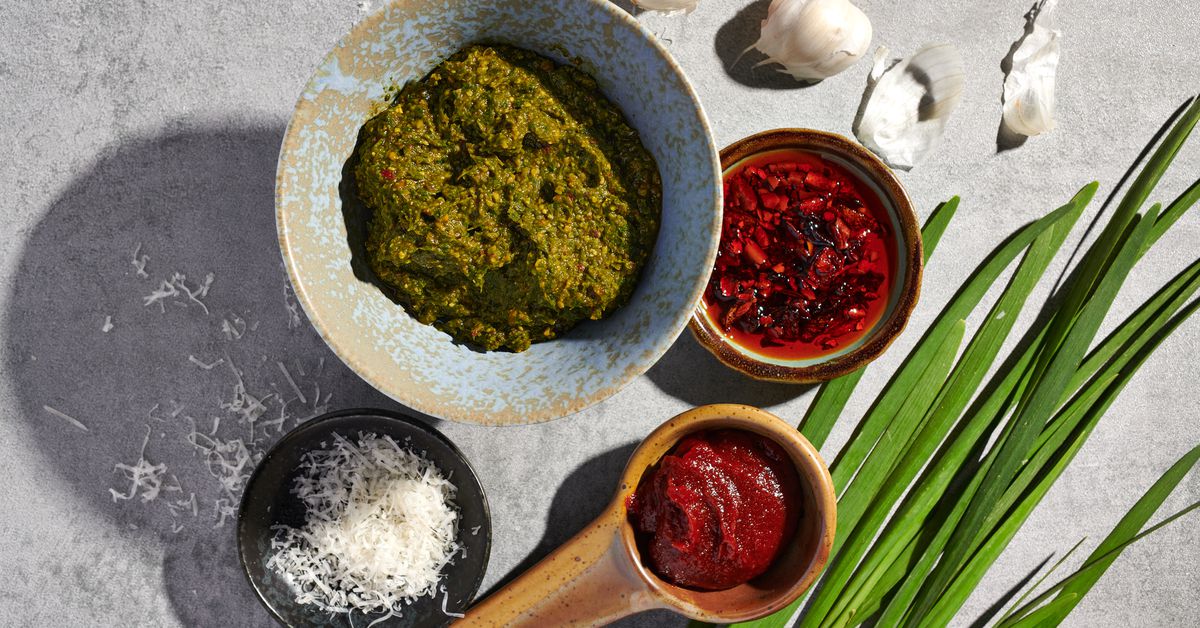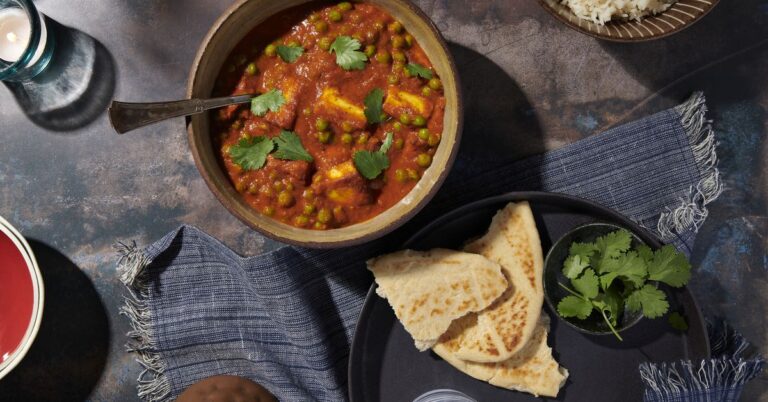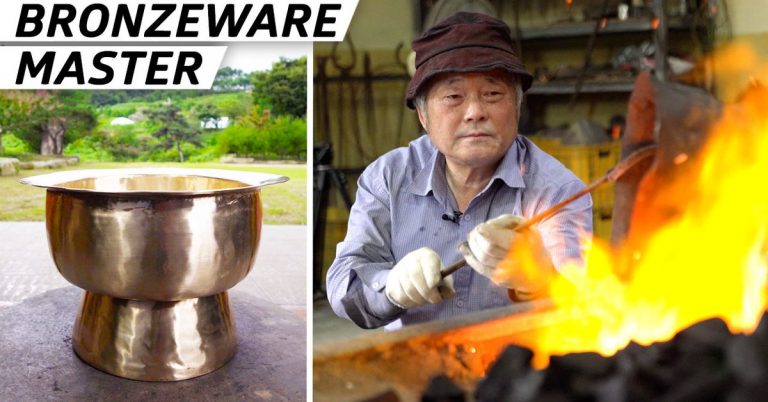This Spicy Pesto Recipe Is Made With Buchu, Used in Korean Food
When I think about Asian Pacific American Heritage Month, there are a million things that come to mind, but all of them boil down to the immense pride I have in my identity and the visceral desire to protect and preserve it. Having toggled between the spheres of a predominantly white Midwestern private high school and a traditional Korean church while I was growing up, it took some time (and pursuing food as a career) for me to recognize that my Asian American-ness was too consequential to lie dormant or unexplored — that it was instead something to be openly celebrated and embraced in all its nuances.
Given the scary, disturbing reality of anti-Asian rhetoric and hate in this country, I continue to feel the need to prove that I belong here, and so do the people I love. I find it hard to distinguish between real and perceived threats these days: there have been times I’ve felt obligated to board the same subway car as an Asian elder I didn’t know in case something went awry in transit, and I’m ready to hold my own with any stranger who comes off as remotely rude to my non-English-speaking grandparents, even if the person’s curtness may just be nothing more than a function of their personality. But we live in a day and age when giving someone the benefit of the doubt can feel risky and even naive, so defensiveness and caution have become my main protective mechanisms. I’m sure other AAPI (Asian American and Pacific Islanders), and people of color at large, can relate.
It’s not lost on me that working in the industry I do gives me a unique platform to share and honor my heritage through what I write and create. For that, I’m incredibly grateful. I’ve wrestled with the fear of pigeonholing myself as solely a “Korean” or “Asian” recipe developer, but I’m learning that no one can determine what being Korean American looks like for me, and that my identity doesn’t preclude me from pursuing anything I want to, whether it’s pitching a classic Korean stew or developing a definitely-not-Asian pasta dish inspired by a recent trip to the West Coast.
All of that is to say that I’ve been sitting on the idea of a pesto recipe using buchu (garlic chives) for a while, and finally got around to developing it. Nope, this isn’t a family recipe, a traditional Korean dish, or something I grew up eating. It’s simply an example of how I draw inspiration from my cultural background and find ways to apply it to my work. My brain is always churning; it doesn’t have to be more complicated than that.
Buchu, in Korean cuisine, is commonly pickled into kimchi or added to jeon (savory pancakes) or dumpling fillings. In this recipe, the flat, garlicky chives are chopped up and blitzed with spinach, Parmesan, pine nuts, and olive oil to make an herbal-tasting pesto with an edge of heat, thanks to jarred chili crisp sauce and a touch of gochujang. Though I provide measurements below, you can feel free to adjust the seasoning as desired. While this is definitely a departure from your average basil pesto, but it’s just as hearty and versatile. I’ve eaten buchu pesto with roasted tomatoes and over steamed tofu, but in my opinion, nothing beats tossing the piquant green sauce with a bowl of fresh pasta and a splash of pasta water — it’s aromatic and slightly spicy, familiar yet surprising, kind of Korean and kind of not, and exactly what I need when I come home hangry at 10 at night.
Spicy Garlicky Buchu Pesto Recipe
Makes about 2 cups
Ingredients:
4 ounces (about ½ bundle) buchu (garlic chives), roughly chopped
2 packed cups baby spinach leaves
2 garlic cloves, roughly chopped
2/3 cup freshly shredded Parmesan (I use the large holes of a box grater), plus more for topping pasta
½ cup unsalted pine nuts
2 tablespoons jarred chili crisp sauce (including the oil)
2 teaspoons gochujang (Korean red chile paste)
1¼ teaspoons kosher salt, plus more to taste
½ teaspoon coarse black pepper
½ cup good quality extra-virgin olive oil, divided, plus more as needed
Pasta, to serve (a short shape preferred, like rotini or elbows)
Instructions:
Step 1: Add all of the ingredients except the olive oil to a food processor (at least 8-cup capacity) and pulse until a gritty paste forms, scraping down the bowl with a rubber spatula a few times during the process to make sure everything is evenly incorporated.
Step 2: Pour in ¼ cup of olive oil and pulse again until the oil is incorporated into the mixture. Scrape down the bowl, then add in the remaining ¼ cup of olive oil and pulse once more until the pesto comes together and is fully emulsified. Adjust the seasoning to taste.
Step 3: To serve, cook the pasta until al dente according to package instructions. Reserve a cup or so of the pasta water, then drain the pasta. While the noodles are still warm, toss them with a spoonful (or however much you prefer) of the pesto and a splash of the reserved pasta water until the pasta is evenly coated in the sauce. Top with freshly grated Parmesan and serve immediately. Transfer any left over pesto to an airtight container (pour a thin layer of olive oil over the top of the pesto before sealing the container), and store in the refrigerator for a few days.
Joy Cho is a freelance writer, recipe developer, and pastry chef based in New York City.
Dina Ávila is a photographer in Portland, Oregon.
Recipe tested by Ivy Manning






